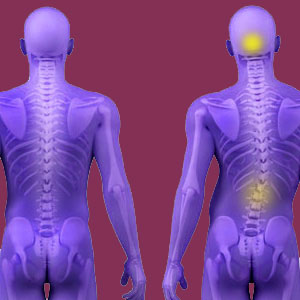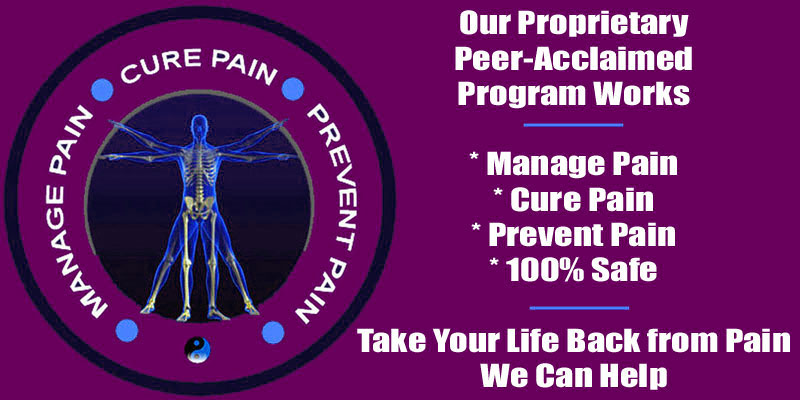
Psychosomatic scoliosis pain is a very real occurrence and is often a direct result of the nocebo effect enacted by a positive diagnosis of abnormal spinal curvature. Psychosomatic is a word much maligned in the medical system, being misunderstood by most patients and inappropriately utilized by some doctors. However, we can begin this important resource section by stating the simple and unequivocal fact that psychosomatic health consequences are completely universal and a normal part of our day-to-day lives as humans. After all, the mind influences the body in every aspect of health and illness on a continual basis.
We are not generalizing that all scoliosis pain is psychosomatic, nor are we dismissing the various manifestations of secondary gain that sometimes are observed in the patient community and confused for true psychosomatic manifestations. However, we are propagating the truth that a significant portion of all pain associated with scoliosis is not a result of any structural mechanism or anatomical deficiency, but instead is a direct result of the interactions between mind and body. In some cases, this pain might be psychosomatic, while in others it might be completely psychogenic.
This resource section examines the incidence and explanations for pain generated by the mind in association with atypical side-to-side spinal curvature. We will examine psychogenic and psychosomatic processes that incite pain and how the healthcare establishment can be culpable for fostering this process.
Psychogenic and Psychosomatic Scoliosis Pain
Psychosomatic does not mean imaginary, exaggerated or fake. It simply describes the effect on pain that is created by the power of the mind, rather than the deficiency or pathology of the body. It is well known and widely documented that the mind influences the body at every level of function. The mind can heal and the mind can harm, depending on its whim.
We have all heard of the placebo effect and how the mind can create positive changes in the anatomy when it believes that a particular treatment, product or device is helpful, despite no actual efficacy being offered. However, most of us do not know the full extent of the nocebo effect, which is described as the diametric opposite of placebo. A nocebo is something that harms us, despite having no inherent pathological power. We believe that we are being harmed, or have already been harmed, and therefore we experience negative health consequences. Nocebo is an inherent part of the diagnosis of most diseases and structural irregularities in the anatomy. Once we are aware of these “problems”, they tend to become symptomatic for the first time or increase in symptomology.
The word psychosomatic simply refers to the normal influence of the mind over the body. The mind is the commander of the body, issuing forth never-ending instructions to manage its seemingly endless number of processes. The processes we can control are called conscious anatomical systems, while those we can not control are called autonomic. The autonomic systems of the body are numerous and vital to life and functionality. However, they are not automatic. Instead, they are directly regulated and managed by the subconscious and unconscious aspects of the mind. Therefore, we can say that everyone is subject to the psychosomatic effects of their psychoemotional state upon every aspect of health on a continuing basis until death.
Psychosomatic health effects range in degree of influence of the mind, compared to influence from the body directly. Some structural pain problems are 99% physically-motivated, while they might only contain a small fraction of mindbody influence. Some serious and chronic pain problems have at least a 50% share of influence going to the mind. Meanwhile, a significant portion of these same dire health issues are far more influenced by the power of the mind in causation, perpetuation and intensification, compared to the influence of purely structural anatomical factors alone. Many health issues are wholly psychogenic.
Psychogenic denotes health expressions that are directly caused by the mind in entirety. These conditions are not simply influenced by the state of the mind, but are actually enacted by a psychoemotional process.
When it comes to symptoms associated with scoliosis, all cases will have a psychosomatic component, since the mind will influence pain for the better or worse. However, only some cases will be psychogenic, being created completely due to psychoemotional imperatives rather than actual physical dysfunction or pathology.
Mindbody Scoliosis Pain Dialogs
Below, we provide topical discussions on specific aspects of the mindbody process and its effects on pain levels in scoliosis sufferers. As each new article is made available for publication, it will be added to the following list:
Tension myositis syndrome scoliosis uses Dr. John E. Sarno’s theories of mindbody interaction to explain symptoms that occur after the diagnosis of side-to-side curvature in many patients.
Scoliosis knowledge therapy is an effective form of treatment that can eliminate pain even though it does nothing to act on the severity of the backbone curvature.
The scoliosis nocebo effect is very powerful and is always a factor in which patients will experience symptoms. In some cases, the nocebo is contributory to pain, while in other cases, it is wholly responsible. Scoliosis fears can be escalated via the nocebo effect to the point of disability in some unfortunate patients.
Sure you might know all about the anatomy of scoliosis, but do you understand and appreciate the full gravity of the psychology of scoliosis?
Psychosomatic Scoliosis Pain Experiences
Every patient who is diagnosed with scoliosis will have to face the considerable effect of the nocebo. They might view themselves as damaged, disabled or prone to suffering in the future. The way they are managed by caregivers will greatly influence how they will react to the natural occurrence of nocebo. Quality scoliosis care from an objective and knowledgeable provider should help to diminish the power of the negative psychoemotional nocebo considerably. Meanwhile, ignorant, unempathetic, opportunistic and predatory caregivers who place money above the health needs of their patients can escalate the nocebo to frightening degrees and consequences.
Psychosomatic does not always mean that something bad is occurring in the body. In fact, the positive influences of the mind are just as strong and capable as the negative ones. Just as the mind can cause dysfunction, it can also heal, diminish and completely resolve pain. We see this in the example of knowledge therapy treatment and pain coaching, which do nothing to reverse atypical spinal curvature, but are very effectual at ending pain associated with many cases of scoliosis. These safe and proven modalities act on the psychoemotional causes of pain where the problem is generated and lives, in the substance of the mind, and coaching even works to reduce the direct expression of pain at purely anatomical levels.
The effects of the mind on health is a complicated topic. Be sure to read all of the dialogs on this page before moving on to the next section. They are all crucial for the complete understanding of scoliosis. Once you feel confident that you comprehend the importance of the mind on the body when it comes to scoliosis symptoms, you are already halfway towards reliving the pain and diminishing the fear and the collateral effects of both on your life or your child’s life.
Our proven Cure Back Pain Forever Program is ideally suited for all varieties of mindbody symptomology. The program has earned honors from many notable care providers and is available to help you immediately with worldwide online access.
Scoliosis > Psychosomatic Scoliosis Pain





